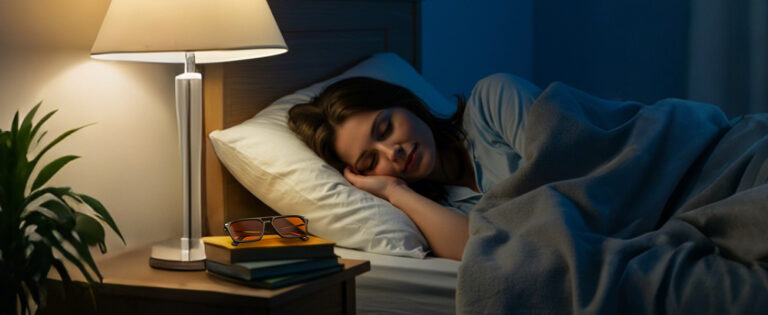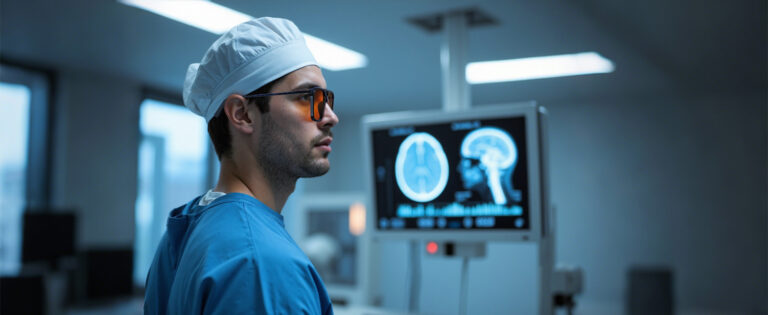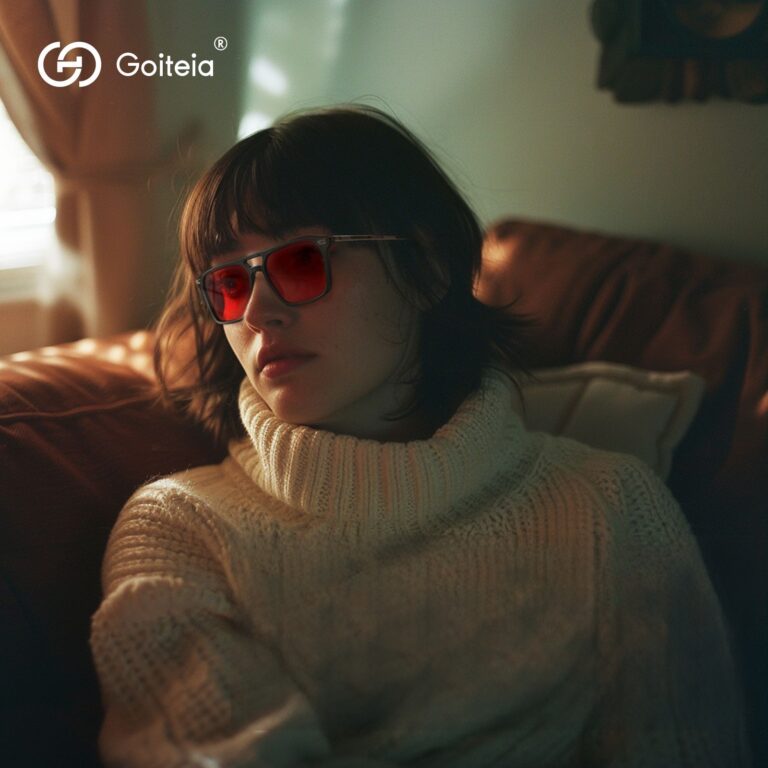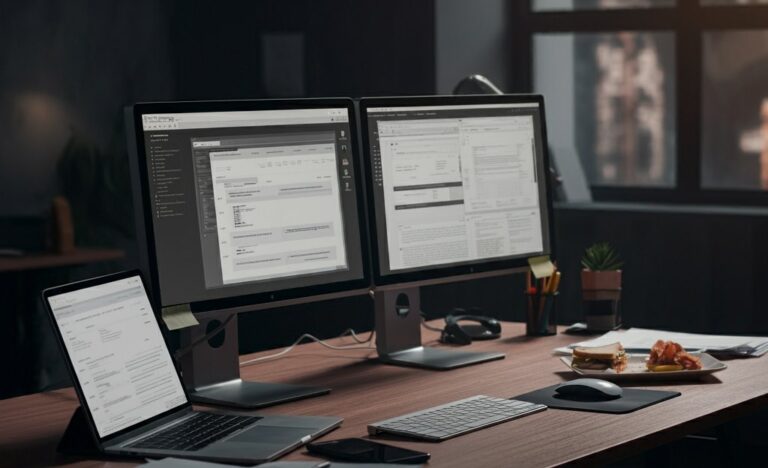Free UK/DE/FR/IT/ES/US Shipping SHOP NOW
Have you ever found yourself lying in bed, wide awake, while your mind races and your body just won’t relax? You toss and turn, counting sheep, but sleep seems to be playing a cruel game of hide and seek with you. If so, you’re far from alone. In today’s digital-dominated world, we’re constantly surrounded by artificial light sources that can throw our sleep cycles into chaos.
The culprit? Blue light. But what if there was a simple solution that combined the power of light itself to help you get the restful sleep you deserve? Enter red light therapy and red-tinted blue light blocking glasses. Let’s explore how these two can transform your sleep and leave you feeling refreshed every morning.
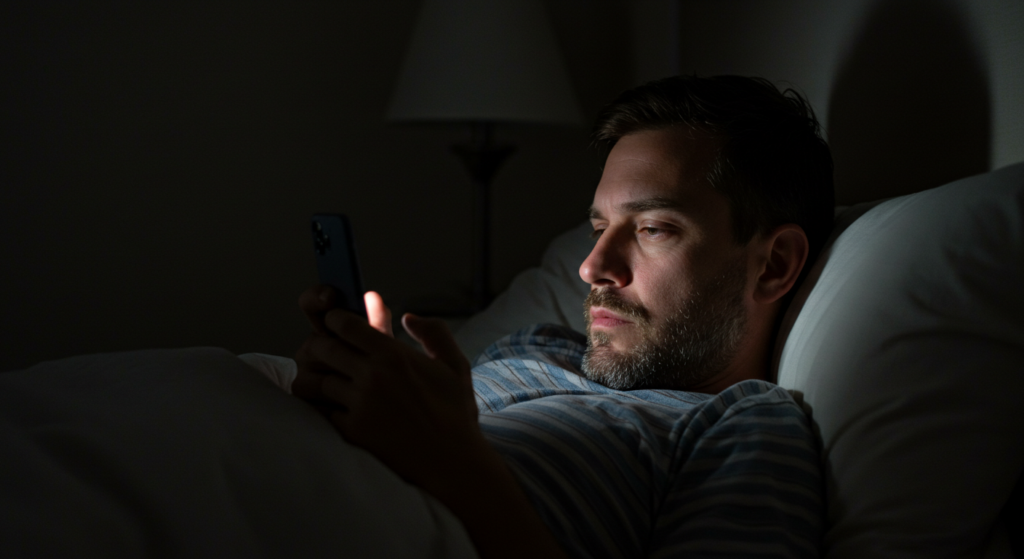
The Magic of Red Light Therapy
Unveiling Red Light Therapy
Red light therapy is a non-invasive treatment that involves exposing your body to low-wavelength red light, typically in the range of 600-700nm. It’s like a gentle, healing glow that has been utilized for various purposes, from wound healing to muscle recovery. In recent years, it has gained significant attention for its potential to improve sleep.
The Science Behind It
Red light functions at the cellular level. When the red light penetrates the skin, it stimulates a process in our cells called mitochondrial respiration. This, in turn, increases the production of Adenosine Triphosphate (ATP), the energy currency of our cells. As our cells become more energized, it has a cascading effect on our body’s overall function, including our sleep-wake cycle. For instance, the enhanced energy production can support the proper functioning of the nervous system, which is closely linked to sleep regulation.
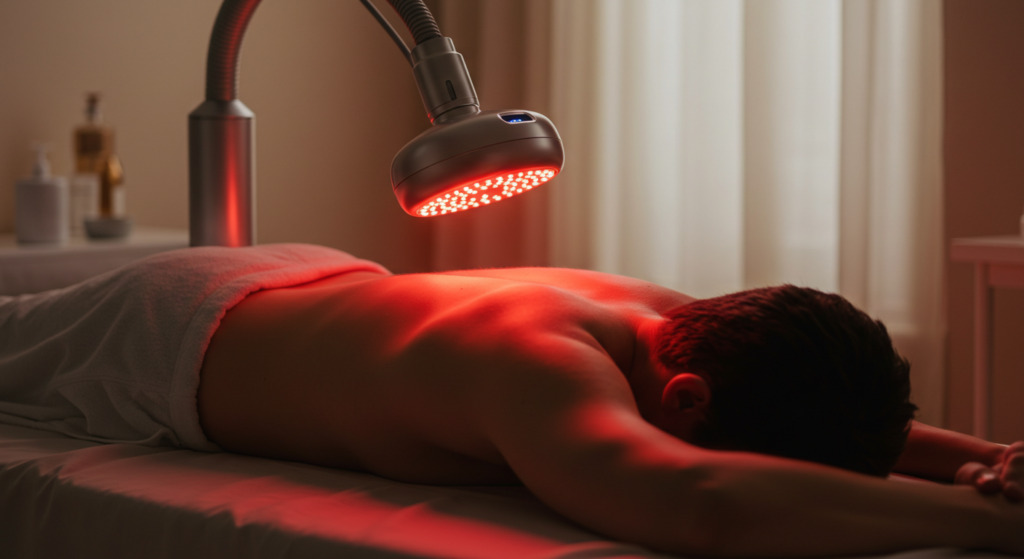
The Benefits of Red Light Therapy
Boosting Melatonin Production: Unlike blue light, which suppresses Melatonin, red light actually promotes its production. A study found that individuals who underwent red light therapy for 15 minutes before bed had a 25% increase in Melatonin levels compared to those who didn’t. Research by the American Academy of Sleep Medicine also shows that just 60 minutes of exposure to blue light from a cell phone before bedtime can delay Melatonin secretion by about 90 minutes.
For example, Sarah, a 32-year-old marketing professional, had been struggling with insomnia for months. After incorporating 15-minute red light therapy sessions into her bedtime routine, she noticed a significant improvement. Her average time to fall asleep decreased from around 40 minutes to just 20 minutes, and she woke up feeling more refreshed in the morning. This means you’ll fall asleep faster and experience deeper, more restful sleep.
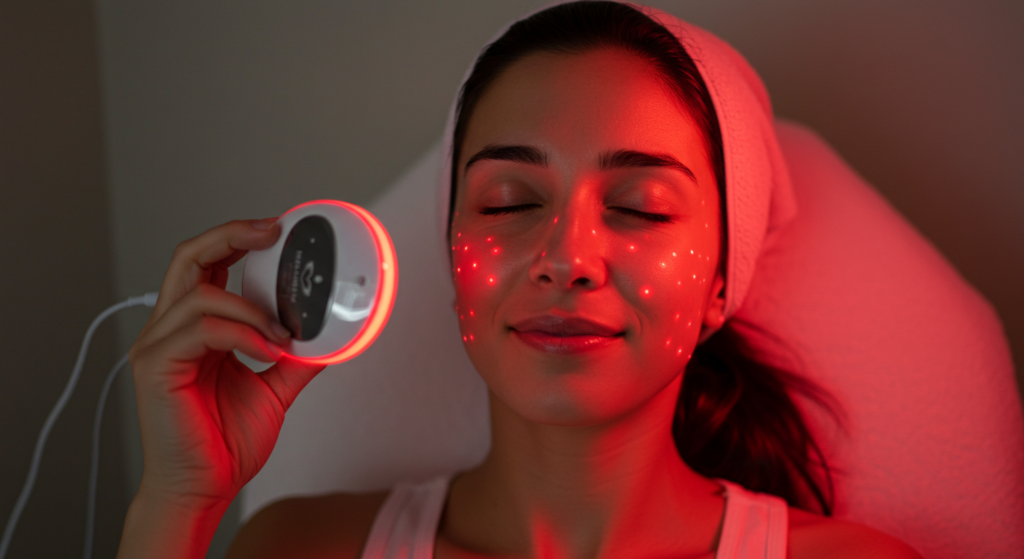
Relaxing the Body and Mind: Red light therapy activates the parasympathetic nervous system, which is responsible for the “rest and digest” response in our bodies. It effectively signals the body to relax. Many users of red light therapy report feeling less stressed and more at ease. Take John, a 45-year-old teacher. After a long day of work, he would often feel tense and have trouble winding down. But after starting red light therapy, he noticed a remarkable difference. “I used to lie in bed for hours, my mind racing with all the things I needed to do. Now, after the red light therapy, I feel so much calmer. It’s like a weight has been lifted off my shoulders, and I can fall asleep much more easily.” he said. This relaxation response makes it easier to transition into sleep mode.
The Menace of Blue Light
What Exactly is Blue Light?
Blue light, a type of electromagnetic radiation within the visible light spectrum, features a short wavelength and high energy. You might think of it as the “energetic” light. Natural sunlight contains blue light, which is beneficial during the day as it helps keep us alert and focused. However, the issue is that blue light is also emitted by a wide range of modern devices we use daily, such as smartphones, laptops, tablets, and LED lights.
The Harms of Blue Light
Disrupting the Sleep Cycle
Our bodies possess an internal clock known as the circadian rhythm, which regulates our sleep-wake cycle. Blue light, particularly in the evening, acts as a disruptor to this rhythm. It deceives our brain into thinking it’s still daytime, suppressing the production of Melatonin, the hormone responsible for inducing sleep. Research indicates that just 60 minutes of blue light exposure from a smartphone screen can delay the onset of Melatonin production by approximately 90 minutes. This implies that you’ll be tossing and turning in bed for an extended period, waiting for sleep to arrive.
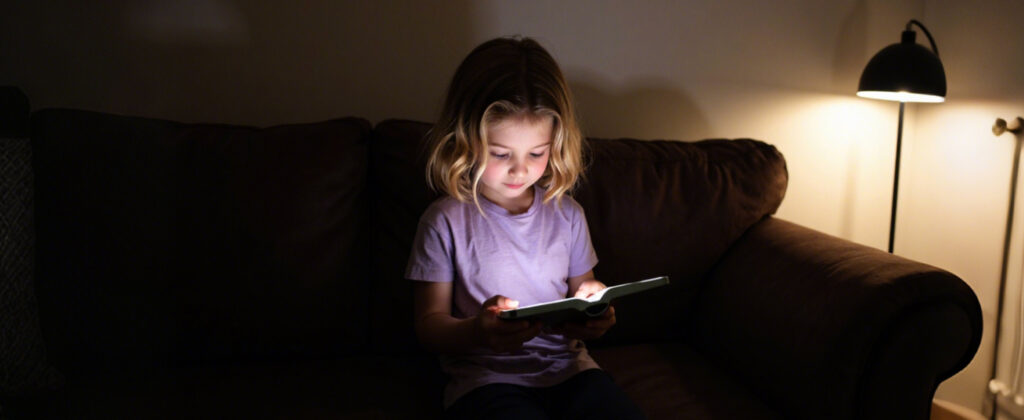
Straining Your Eyes
Long – term exposure to blue light can also cause significant eye strain. Have you ever spent hours staring at a screen and then experienced burning, itching, or a heavy, tired sensation in your eyes? That’s the effect of blue light. Moreover, it can contribute to long-term eye problems like digital eye fatigue, which may lead to headaches and a reduction in visual acuity.
Defending Against Blue Light
Struggling with the effects of blue light? Goiteia 100% Blue Light Blocking Glasses are the answer!
These red-tinted glasses are a cut above the rest. They block 100% of blue and green light, perfect for light-sensitive folks or those aiming to improve sleep after too much screen time. The lenses are tested to block light that suppresses melatonin, helping your body produce it faster for a better sleep-wake cycle.
But that’s not all. The upgraded anti-reflective coating minimizes glare and reflections, giving you a crystal-clear view during any screen activity. They’re also great for relieving eye strain and headaches from long-term device use. Crafted from lightweight TR90 material with spring-hinged metal temples, they’re super comfortable and stylish, fitting larger heads and wider faces.
Whether you’re wearing them while working on your laptop, reading an e-book, or simply relaxing in front of the TV, you can do so for extended periods without discomfort.
Don’t let blue light ruin your day or night. Try Goiteia glasses and experience the difference!
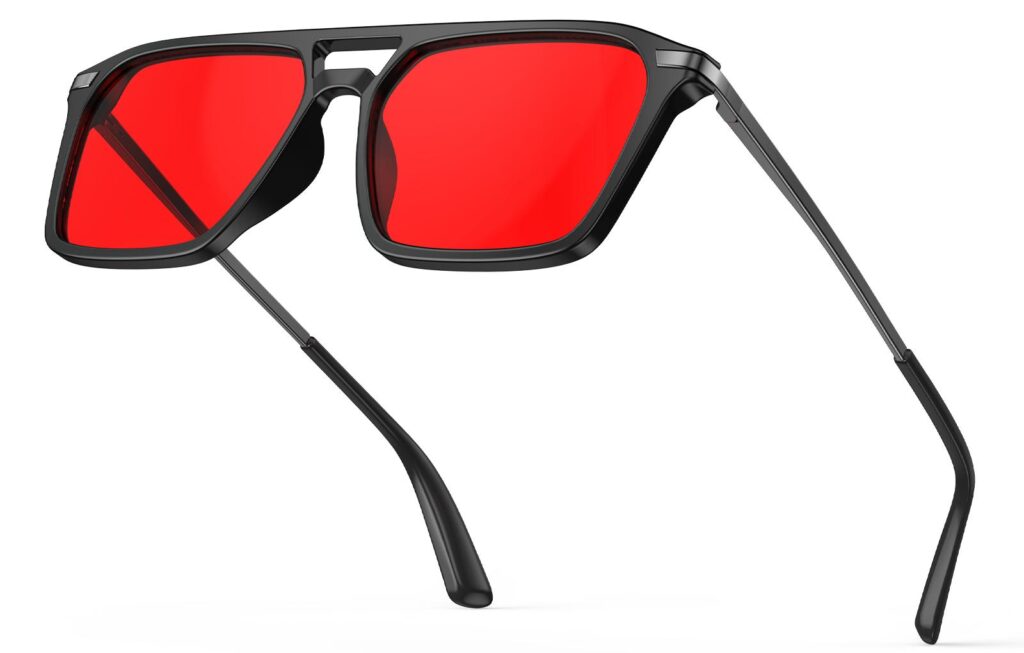
The Perfect Pair: Combining Red Light and Blue Light Protection
We’ve seen how blue light can disrupt our sleep and cause eye strain, while red light can promote sleep and relaxation. So, what if there was a way to get the best of both worlds? That’s where our red-tinted blue light blocking glasses come in.
These glasses not only block out harmful blue light but also allow a certain amount of red-like light to pass through. The red-tinted lenses are carefully engineered to mimic the beneficial effects of red light therapy. When you wear them in the evening, especially in the hours leading up to bedtime, you’re not only protecting your eyes from blue light but also giving your body a gentle dose of “red light therapy-like” benefits.
The unique design of the lenses ensures that while they block blue light, they also transmit a specific spectrum of light that has a soothing effect on the body. This helps to further enhance the relaxation process and support a healthy sleep cycle.
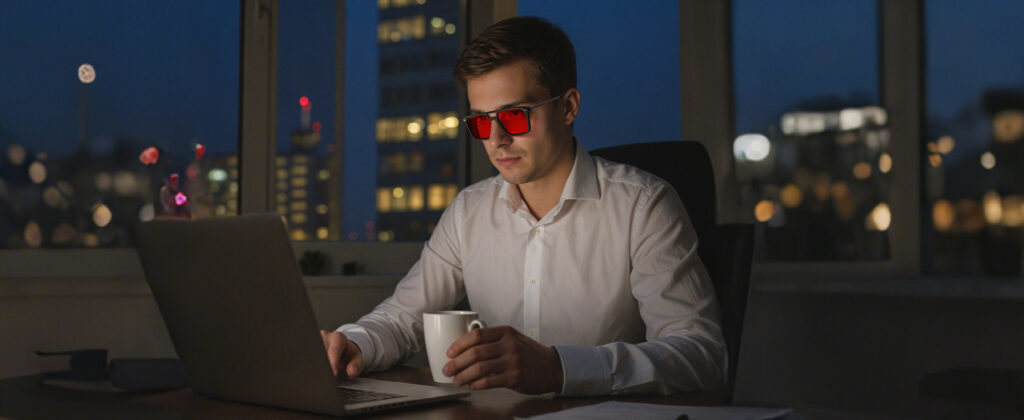
Conclusion
In conclusion, blue light poses a real threat to our sleep and overall well-being, but red light therapy and red-tinted blue light blocking glasses offer a natural and effective solution. By incorporating these into your evening routine, you can take control of your sleep and wake up feeling refreshed, energized, and ready to take on the day.
FAQs
1. How soon can I see results from red light therapy and wearing red-tinted blue light-blocking glasses?
Most people start noticing improvements in about a week. It’s like resetting your body’s sleep “alarm clock.” Some people adjust quickly and see results sooner, while others might take up to two weeks. Don’t worry; just keep at it, and better sleep will come!
2. Are red-tinted blue light-blocking glasses suitable for everyone?
Generally, they are! But if you have any eye concerns or are worried about discomfort, it’s like trying on new shoes. It’s better to consult an eye doctor, the “professional shopper” for your eyes, to be safe.
3. Can I do red light therapy and wear the glasses at the same time?
You can, but it’s not necessary. Think of red light therapy as a special pre-bedtime “mini-party” for your body. Have it 30~60 minutes before bed. The red-tinted blue light-blocking glasses can “stand guard” for your eyes, and you can put them on 2 hours before sleep. Separate use for better results.
4. Will the red-tinted glasses change the way I see colors?
There will be a change, like adding a red filter to the world. But it won’t stop you from doing your daily activities. Once you get used to it, everything will still be as clear as day!
5. How often should I use red light therapy?
Use red light therapy for 10~20 minutes every night before bed. It’s like giving your body a “gentle massage” for better sleep. Keep it up daily, and it’s like “recharging” your sleep. You’ll notice a big improvement in your sleep quality!


